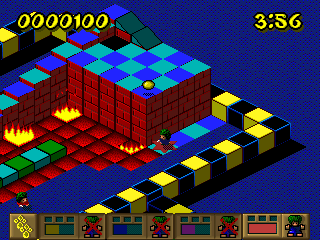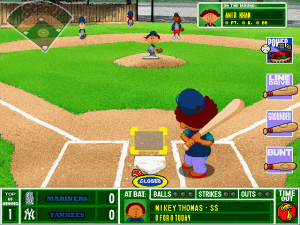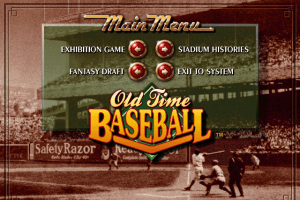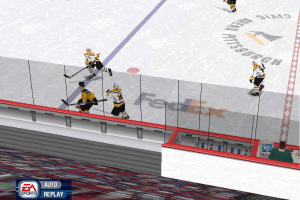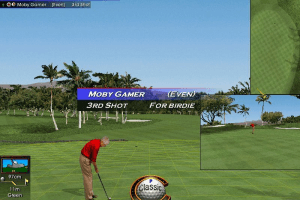Triple Play 2000
Windows - 1999
Description of Triple Play 2000
Midgets and orange balls are one thing, but this...?
A few years back, hockey purists were outraged when the FOX television network added a computer-generated blue halo around the puck to its NHL broadcasts. The so-called FOX Trax viewing aid was intended to remedy the supposedly common American complaint that the game was too fast to watch. Every Canadian worth his back-bacon was appalled. It became such a national joke that Molson Breweries turned it into part of the popular "I AM" ad campaign that is running to this day.
FOX withstood both the wisecracks from up north and unchanging Nielsen ratings for more than three seasons before finally pulling the plug. History fails to record where the FOX Trax inventors wound up after getting their pink slips, but after playing Triple Play 2000, I'd lay my odds on EA Sports. After all, the game contains some of the stupidest, strangest, and most mind-boggling additions to baseball since the AL adopted the DH rule, and surely there can't be that many people capable of so thoroughly desecrating a great sport. Charlie Finley must be rolling in his grave.
A nubber back to the mound
EA Sports has always emphasized fast-moving fun in its games. This approach has won the company legions of fans -- if not the respect of serious sports gamers -- who appreciate how the designers accelerate reality. This has never really done much for me, but gamers who want an hockey title with plenty of bone-crunching oomph, or a basketball game with aerial acrobatics to spare, have been filling the firm's coffers for most of this decade. Triple Play 2000, however, is well beyond the pale. Even with all their faults, NHL 99 and NBA Live 99 at least resembled their respective sports. This game doesn't. It is to baseball what corned beef is to lawn bowling.
If EA Sports informed consumers openly that it was taking an NFL Blitz approach to things, I might be more inclined to kindness here. But it doesn't, so I can only expect that other gamers were as surprised as I was to have installed "a game with ultimate Major League realism" that came complete with ka-booming homers and liners that look like Halley's Comet. This one should carry a warning label, not the Major League Baseball seal of approval.
As always, though, the game's flaws are hidden behind a pile of EA propaganda and frills that seem neato in the press release but do absolutely nothing to enhance the action on your monitor. Game options include exhibition, playoffs, season, and home run challenge play. Seasons can be run with the Major League rosters as of January 15, or the players can be tossed into a pool and redrafted. An interesting option here can force gamers to draft with a points cap that serves as sort of an unofficial salary cap. Not a bad idea if you're playing in a league with human opposition. Home run challenge features two batters going head-to-head in competition where every swing that doesn't top the fences is an out. The career aspirations of last year's title have been dumped entirely. This might not be a bad idea -- since the model used in Triple Play 99 was, by and large, atrocious -- but I'm sure most of us would rather have seen the designers work with the concept instead of throwing it out altogether. With the likes of High Heat 2000 providing the complete career experience, EA will have to address this shortcoming at some point.
Options galore, as usual.
Virtually all of the difficulty settings can be adjusted. Games can be one, three, five, seven, or nine innings in length. The level of challenge can be set globally by clicking on Rookie, Pro, or All-Star. Custom is available for those who want to tweak individual options such as fielding, throwing, base-running, pitch aftertouch, and so on. Player skill level -- both user and CPU -- can be adjusted. Game speed can be slowed down or speeded up at will, although all of the settings are far quicker than they should be. You can further choose to play that big upcoming game in the afternoon, evening, or at dusk. Weather conditions can be random, clear, or overcast, and wind effects can be switched on and off as you prefer. Trades in season play can be made with a (quasi) intelligent mechanism turned on to disable blatant ripoffs. A full-function player editor is also included for those who want to put themselves into the game.
Three control methods are featured. Along with the traditional keyboard and gamepad configurations, EA has included mouse control. This works quite well, allowing the user to click on menus to select swing and pitch type, and advance runners by clicking on the standard base diagram. All three allow the gamer a lot of control, both at the plate and in the field. Batters can aim their swings, fielders can throw conservatively or go for broke with an aggressive toss, and pitchers can apply aftertouch to spin the ball however they wish after it's been released.
Out by a mile!
So, Triple Play 2000 has a lot to offer, right? Wrong. As attractive as the list of options undoubtedly is, it means nothing if the gameplay it fronts is unsound. And the gameplay here is about as unsound as it gets.
First of all, let's look at the most important component: the pitcher-batter confrontation. Since this is a good 90% of baseball, it's imperative that the designers get it right. Hurlers should be rewarded for varying pitch location and selection. If my virtual Pedro Martinez follows a couple of heaters with a devastating change, he should be rewarded with a whiff most of the time. Same goes for hitting. If I can get Larry Walker to work a 3-0 or 3-1 count, I should be paid off with something meaty down the middle. Yet EA Sports doesn't appear to have bothered with this. Pitches are obviously taken and dished out by the computer AI on an individual basis regardless of count. In other words, I'm more likely to see the program crush Pedro's change than I am of seeing it swing through.
This is simply unforgivable for anyone who follows and appreciates baseball. It really is a mind game, first and foremost. One of the best things about watching a big league game is the unparalleled manipulation that's constantly going on. Pitchers have to mess with the heads of batters or hit the showers early. It's not about just throwing a 95MPH fastball; it's about when and where to throw it. Same goes for hitting. If you don't work the count, and play your game, not his, you'll be sitting back down awfully fast. Yet the designers of this series either still don't understand this, or simply don't care. Triple Play 2000 is all about power and brute force. You think, you lose. It doesn't matter when you unleash that wicked slider or lay down that bunt. All that matters is swinging and throwing as hard as you can. All the subtlety, all the magic, that has made the game a draw for more than a century now, is missing.
From left to right: Home run challenge play; ka-boom; here it comes!
In the end, this results in a game that doesn't play much like baseball at any level. What's on your screen won't compare to either sandlot ball or The Show. Scoring is prodigious. Playing at the lowest difficulty setting results in Brobdingnagian efforts; I scored 23 runs in a five-inning tilt with the Indians that served as my introduction to the game. This doesn't change much even when you ramp everything up. If anything, the game gets even more frustrating then because the computer starts hitting the gaps with about every third pitch while you simply can't. Homers are far above the Major League average at all levels, even taking into account this year's inflated numbers.
Fielding isn't quite as bad as in past Triple Plays. Everything is accelerated, but not so much that you can't make plays that you should. I was relieved to see that routine grounders generally play out like routine grounders for a change. Unfortunately, there aren't a lot of those slow rollers; almost everything is cranked. Even one-hoppers back to the mound make for very loud outs. I do think that the ball is too small to accurately field at times. It resembles a tiny white block when using the aerial fielding view and can be tough to properly get in front of. I absolutely despise the fly ball mechanism. You have to get under a shrinking shadow and accompanying target to make the catch, yet neither shows up until the ball is already well on its way. Valuable seconds are lost while you wait to see where they will appear. Furthermore, the targeting graphic is almost impossible to pick up in the few moments you have to pick out a good 'camping spot.' This often causes me to miss easy flies.
Foul balls are perhaps the biggest nuisance in the game. There are a lot of them. Every at-bat tends to feature a couple. This wouldn't be so bad if the engine didn't follow balls hit out of play. The camera will track a foul hit on the ground or into the stands for a good three seconds, a pause that gets very annoying, very fast. There seems to be no way to skip past this. I was gritting my teeth in impatience by the third inning of every game I played.
Some might complain that I'm being too unfair with this sort of critique. That I'm holding an arcade baseball game up to criticisms that shouldn't be levelled against it. To me, however, that's just a cop-out. Even if EA Sports didn't set out to build the perfect baseball game, the company is still responsible to provide a baseball-like experience. And it didn't. Except for the undeniable excitement of the home-run, every dimension of the true game is sorely absent.
Whooooosh!
The Triple Play series has always lagged behind the rest of the EA Sports line in terms of visual appeal, and this latest game is no different. While the 3D-accelerated graphics aren't specifically bad, they are awfully plain. Stadiums have been stamped by some sort of digital cookie cutter. Even the most historical ballparks in the grand old game appear like the latest creations. The character of Wrigley and Fenway is exactly the same as a good-looking update like The Ballpark at Arlington and abominations like the Metrodome and Olympic Stadium. And that's just not right. Animations are quite good, though, with players taking fairly realistic cuts and moving in a lifelike manner on the field. Yet, once again, this is damaged by the speeds at which events take place. I find it tough not to laugh at the way Shawn Green throws lasers to the plate and Derek Jeter spins like Nadia Comaneci whenever he turns two. They're doing the right things, but at velocities that only those with the chemical composition of a Ben Johnson can even approach. It's more slapstick than sporting event. Oh, and I can't forget to mention the comet-like tail that the ball trails. Thankfully, this can be switched off.
One major problem I've experienced with the graphics is a dark shadow surrounding the backstop all the way to the edge of the home plate. This occurs in domed stadiums and during cloudy daytime games; night games are unaffected. I'm assuming that this is a TNT-related bug, but this might be a design feature gone awry. The shadow seems too perfect for it to be some sort of programming error. It's probably supposed to be there -- just not so impenetrable.
Olympic Stadium and Fenway Park: Can you tell beauty from the beast here?
In a similar vein, the quality of the audio is excellent. What's there, however, is very questionable. Every movement on the field is accompanied by an overblown special effect more appropriate to an episode of Xena. The ball makes a loud 'whooosh' as it travels through the air. Gloves smack like gunfire with every catch, no matter how routine. Home runs and long, loud outs literally explode off the bat. None of these added touches can be switched off. So if you don't appreciate a baseball game with all the subtlety of Lucy Lawless beating the hell out of a bunch of barbarians, Triple Play 2000 is definitely not for you.
Jim Hughson and Buck Martinez are back for the play-by-play and color duties. Their voices add a professional, TV sheen to the proceedings that EA Sports always does so well. They handle things well, although there's little difference between what they were saying two years ago and what they're blabbing on about now. Jim still boldly states the obvious ("That's another ball!") and Buck specializes in inane non-sequiturs ("Tino Martinez is among the league leaders in home-runs."). And they're still shilling for Lobster Cola. As someone who's been a member of the "I Hate Hughson" fan club for a decade now, I wasted no time in shutting the two off. If you haven't been exposed to the exquisite pain that is a Jim Hughson-helmed hockey broadcast (in which he typically says "That's hockey!" at WWF-style decibels with every icing, offside, shot on net, gulp from water bottle, etc.), your opinion may differ.
Early retirement
After spending far too many minutes with Triple Play 2000, I'm left with the same question that haunted me for days after removing Triple Play 99 from my hard drive: Who was this game designed for? Baseball purists won't go near the title. Less than five minutes with gamepad in hand will send them scurrying for the uninstall command and the safety of the latest Baseball Weekly. Casual baseball fans who want some semblance of reality will likely be turned off by the football-like final scores and ridiculous audio effects. So what does that leave?
The only answer I can come up with here is people who hate baseball. Those who think that the sport is too slow and dull to watch or participate in. But why would someone who can't stomach the real game bother with its computer counterpart? It makes no sense why a company would bother with the Major League license if they're not intending to create a true baseball game. This title is all steak and no sizzle. Meaning you'll get dingers and runs aplenty but not vital elements such as the pitcher-batter duel and the late-inning tension of a low-scoring contest. In other words, nothing of what makes baseball great. Triple Play 2000 is baseball in name only.
Review By GamesDomain
External links
Captures and Snapshots
Write a comment
Share your gamer memories, help others to run the game or comment anything you'd like. If you have trouble to run Triple Play 2000 (Windows), read the abandonware guide first!
Download Triple Play 2000
We may have multiple downloads for few games when different versions are available. Also, we try to upload manuals and extra documentation when possible. If you have additional files to contribute or have the game in another language, please contact us!
Windows Version
Game Extras
Various files to help you run Triple Play 2000, apply patches, fixes, maps or miscellaneous utilities.
Similar games
Fellow retro gamers also downloaded these games:
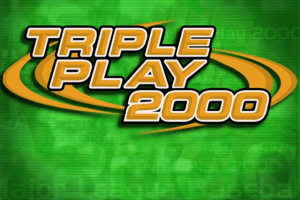
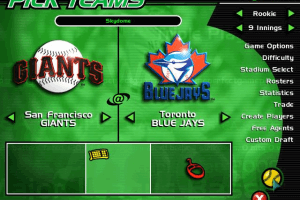
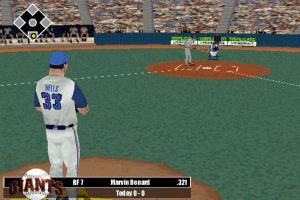
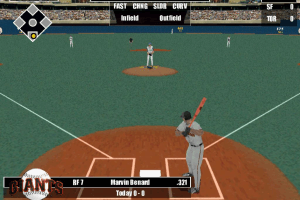
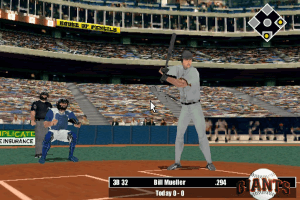
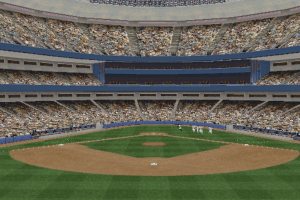
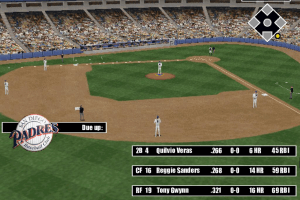
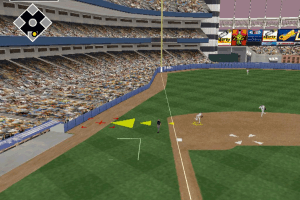
 367 MB
367 MB
